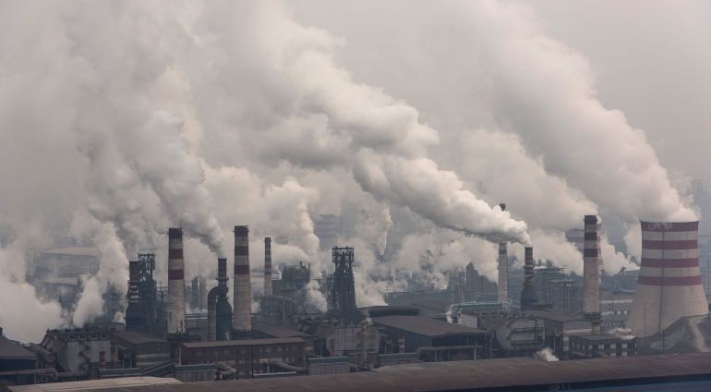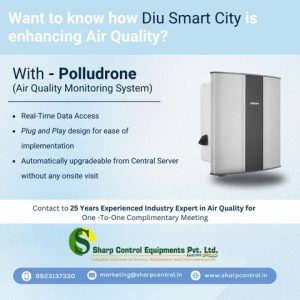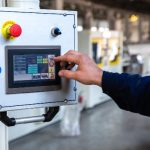Introduction
The foundation of contemporary infrastructure and industrial expansion is the steel and cement sectors. These industries literally serve as the cornerstones of civilisation, from the bridges we traverse to the structures we inhabit. However, there is a significant environmental cost associated with this advancement, especially in the form of air pollution.
The most frequent pollutants released during the manufacturing of cement and steel are dust, carbon dioxide (CO₂), nitrogen oxides (NOₓ), sulfur dioxide (SO₂), and particulate matter (PM₁₀ and PM₂.₅). These emissions have the potential to significantly affect local ecosystems, human health, and the climate if they are not continuously monitored and controlled.
At this point, sophisticated automation and monitoring systems for air pollution become essential. These serve as a smart pollution control technology and an industrial emission monitoring solution, helping to achieve cement plant air quality compliance.
Understanding Air Pollution in Cement and Steel Production
1. Cement Industry
Crushing raw materials, preheating, producing clinker, and grinding are all steps in the cement manufacturing process that add to air pollution.
- Particulate matter and dust are produced during the handling of raw materials, kiln operations, and clinker cooling.
- When limestone is heated to create clinker, CO₂ emissions are produced.
- Fuel combustion and chemical reactions in the kiln produce NOₓ and SO₂.
- Fugitive emissions from storage silos, conveyors, and crushers can seriously worsen local air quality even when dust collectors and filters are in place.
Even with dust collectors and filters in place, fugitive emissions from conveyors, crushers, and storage silos can contribute significantly to local air quality deterioration.
2. Steel Industry
The steel sector is another major source of industrial air pollution.
- Blast furnaces and basic oxygen furnaces emit CO, CO₂, and dust-laden gases.
- Sintering and coke ovens release SO₂, NOₓ, and volatile organic compounds (VOCs).
- Secondary steelmaking and material handling generate fine particulate emissions.
These pollutants not only degrade ambient air quality but also pose occupational hazards for workers inside plant premises.
Why Air Pollution Monitoring Is Critica
Monitoring air pollution is not only important for the environment, but also for modern industries’ strategic operations.
Adherence to Regulations
Continuous emission monitoring (CEMS) is a key part of the continuous emission monitoring system industry and serves as the backbone of CEMS for cement plants. It is done by environmental agencies such as the Central Pollution Control Board (CPCB) and State Pollution Control Boards. Fines, halts in production, or legal action may result from noncompliance.
Efficiency in Operations
Plant operators can improve fuel efficiency and product quality by identifying process inefficiencies, detecting leaks, and controlling combustion performance with the aid of continuous monitoring data.
Safety of Workers
Proactive steps to shield employees from dangerous dust and gas exposure are made possible by real-time air quality insights and real-time emission tracking systems inside plant boundaries.
Key Parameters to Monitor
A robust air quality monitoring system in the cement and steel sector typically tracks:
- Particulate Matter (PM₂.₅, PM₁₀)
- Gaseous Pollutants: SO₂, NOₓ, CO, CO₂, O₃
- Volatile Organic Compounds (VOCs)
- Heavy Metals: Hg, Pb, Cr (in select steel processes)
- Temperature, Humidity, Wind Speed & Direction (for dispersion analysis)
Integrating these parameters provides a holistic view of both emission sources and ambient air quality around industrial zones.
Role of Process Instrumentation and Automation
The real-time demands of contemporary industries cannot be satisfied by traditional manual sampling. This is where pollution monitoring is revolutionized by process automation and instrumentation.
- Systems for Continuous Emission Monitoring (CEMS)
Pollutants like SO₂, NOₓ, CO, and dust concentration are continuously measured by sophisticated analysers placed in stacks and ducts. This data is sent in real time to regulatory servers by automated data acquisition systems (DAS).
- CAAQMS (Continuous Ambient Air Quality Monitoring Systems)
These stations help industries evaluate the impact off-site by monitoring the air quality in the surrounding environment and providing data on dust, gases, and weather conditions around the clock.
- Astute SCADA/DCS Integration
When emission limits are exceeded, centralised visualisation, alarm generation, and prompt corrective action are ensured by integrating monitoring devices with SCADA or DCS platforms.
- Cloud analytics and data digitisation
Trend analysis, performance benchmarking, and remote visibility are made possible by digital dashboards. Data-driven decision-making, predictive maintenance, and automated reporting are all supported by cloud integration.
Benefits of Smart Air Pollution Monitoring
- Regulatory Compliance: Meet CPCB/PCB norms and environmental audit requirements effortlessly.
- Early Warning System: Real-time alerts for emission spikes or equipment malfunction.
- Process Optimisation: Identify operational inefficiencies through emission trends.
- Public & Environmental Safety: Contribute to cleaner air and healthier surroundings.
- Sustainability Reporting: Strengthen ESG performance with accurate, continuous data.
How Process Instrumentation Companies Contribute To Cleaner Industrial Growth
The cement and steel sectors play a vital role in India’s industrial progress. However, the future of these industries depends on how efficiently they can balance production with pollution control. And this is possible with the help of companies like Sharp Control Equipments Pvt. Ltd.
By embracing smart air monitoring, automation, and digital process control, industries can transition from reactive compliance to proactive environmental stewardship. This not only safeguards the planet but also enhances operational reliability and brand reputation.
Air pollution monitoring is no longer optional; it is a cornerstone of responsible industrial operations. With the right combination of advanced sensors, automation systems, and data analytics, cement and steel manufacturers can achieve cleaner, more sustainable, and more efficient production.
By integrating smart instrumentation and real-time monitoring solutions, industries can ensure that growth and sustainability move forward hand in hand.





